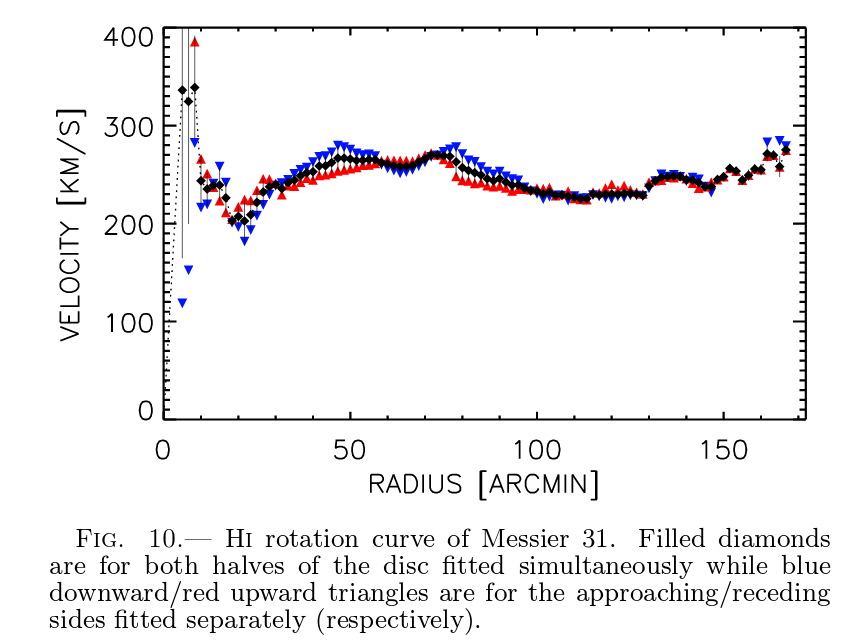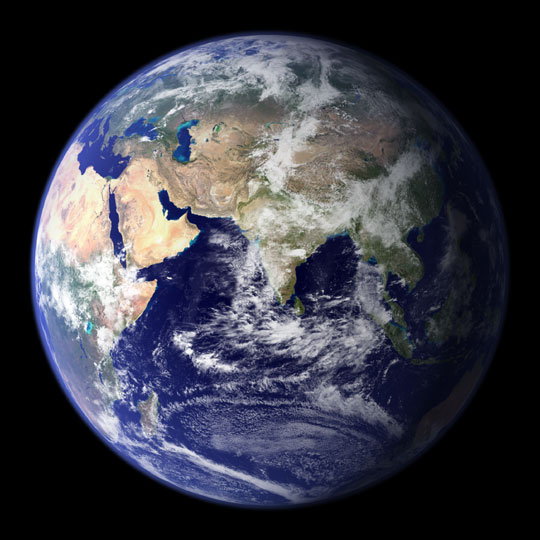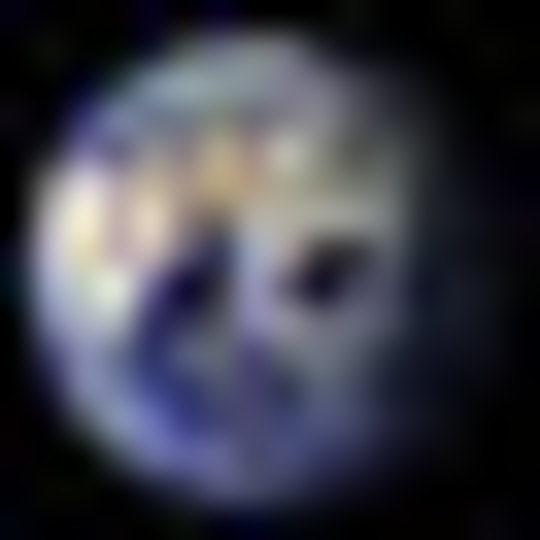
Figure 10 taken from
Chemin et al., arXiv 0909.3846 (2009)

Image courtesy of
NASA
We can still recognize -- sort of -- these rough features if the photo is degraded to a lower resolution, like this:

Suppose that we wished to take pictures of a similar planet around some OTHER star -- pictures as detailed as this, from which we might learn at least a bit about the nature of the planet's surface.
- Estimate the linear resolution (in km) of the degraded image above. Treat this as the minimum linear resolution required to see continental features.
- Consider the TRAPPIST-1 system, which is known to contain a number of Earth-ish-sized planets. What is the distance to this star, according to Gaia DR3?
- What is the angular resolution required to reach the linear resolution from part "a" at the distance of TRAPPIST-1? Express your answer in both radians and arcseconds.
- Suppose we build an optical interferometer in order to achieve this angular resolution, one that operates at a wavelength of λ = 500 nm. How far apart must be place the elements in order to achieve this resolution?
 Copyright © Michael Richmond.
This work is licensed under a Creative Commons License.
Copyright © Michael Richmond.
This work is licensed under a Creative Commons License.